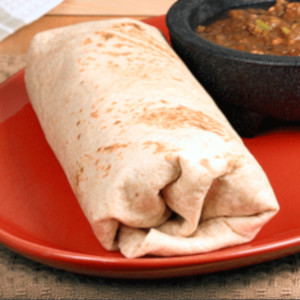We often talk about the lowly but beloved Tortilla, but we rarely discuss its proper care and handling. Time to remedy that oversight! So, we’ll take a close look at Tortillas – both flour and corn – and discover how to get the best possible results when prepping Tex-Mex – and other – classic dishes…
Note how the burrito pro in this video turns in the ‘ears’ of the side flaps at both
the bottom and the top of the roll to ensure a tight, properly closed roll…
Tortillas are the simplest of street foods – flatbread sheets that can be made in a jiffy from a minimum of ingredients, and baked on hot, round rocks if necessary. No surprise that they show up in so many classic, ancient and traditional dishes. No wonder everybody loves ’em.
Alas, familiarity can breed contempt…
It’s a sad fact. Many folks who love tortillas and the dishes they turn up in can’t seem to get the hang of rolling, folding or wrapping the things around their fave fillings. And there are good reasons for that. To really appreciate the Tortilla, you have to know the fine points of ‘tortilla management’.
What is gluten?
More than just a slab of dough, that’s for sure. A closer look at the chemistry of gluten tells an intriguing tale. In flour tortillas, gluten and its behaviour govern the flexibility of the sheet and it’s ability to perform as the cook demands.
Gluten is a protein that makes dough elastic and baked wheat flour products flexible. Alas, as wheat dough products cool and age, their gluten seizes up. Flour tortillas become stiff and tend to crack or break when you try to roll or fold them. Even fresh tortillas can be hard to handle after they’ve cooled and stood for a while. Even if they’ve been tightly wrapped or zip-bagged. That’s why all the authentic recipes tell us to wrap our tortillas in foil and heat them up a little before trying to roll or fold them. Wrapping them ensures that reheating doesn’t drive out essential moisture. And the heating itself reactivates the gluten, making the tortillas flexible again.
To make rigid tortillas forms such as edible Taco Salad bowls, just place a flexible tortilla over the desired bowl form and drive off the moisture by baking in the oven for a few minutes.
Corn is something else, again
Corn is, chemically, gluten-free. It’s not part of the same family of plants as wheat, rye and barley – the grains that contain gluten. So why are we also advised to warm corn tortillas to make them flexible and manageable?
The corn used in Tortillas is not the ‘sweet’ kind we eat off the cob at our summer-harvest barbecues. It’s the kind farmers feed their cattle. The kind that distillers use to make Bourbon and ethanol for blending with gasoline. It’s treated with a strong alkali solution for 12 hours or more to transform the naturally rigid proteins in the corn kernel into gummy, loose ones, which act like gluten.
The product you get after by drying and grinding the the alkali-treated corn is what we call masa. To make tortillas, just add water, press and dry-fry. But even fresh corn tortillas tend to be stiff and hard to manage. Heating them reactivates the gummy proteins and lets you flex them into taco shells or fold them for quesadillas or other dishes.
If you want crispy corn tortillas – like the ones you get in supermarket taco kits – you just fry them in fat or oil.
The art of the Burrito
Rolling a perfect burrito is not a simple thing. Some art is involved, as well as practiced technique and patience. The instructions on the back of every flour tortilla package are just a starting point. Check out the video above for a demo, and a reveal of the finer points…
Presentation makes the difference…
… Between a good dish and a great one! Make all your tortilla dishes great!
~ Maggie J.

